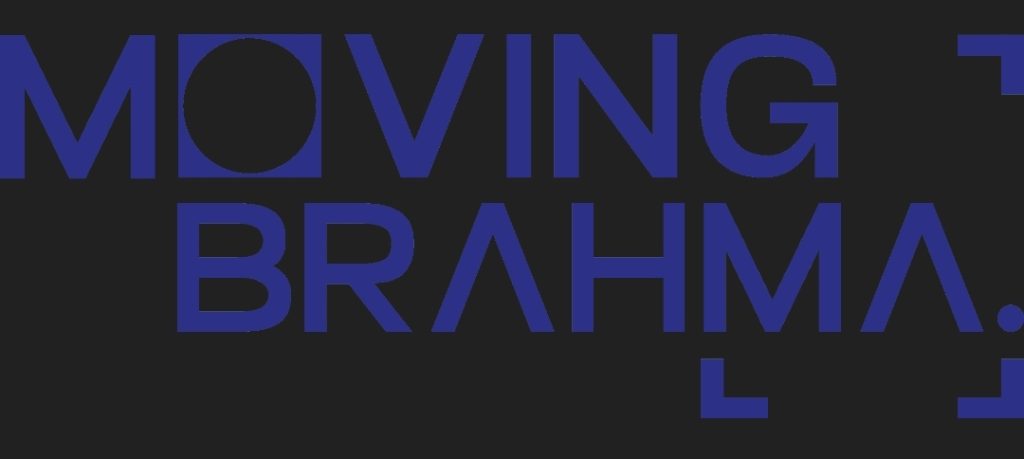In an era where traditional marketing approaches are rapidly becoming obsolete, few leaders have demonstrated the prescience to not just adapt, but to fundamentally reimagine how industries approach growth. Today, we’re honored to sit down with Vatsal Rajgor, the founder of Moving Brahma, a visionary entrepreneur whose journey from the hallowed halls of a leading American business school in Boston to the cutting edge of performance marketing innovation represents one of the most compelling stories in modern marketing leadership.
Rajgor’s story is one of calculated disruption and strategic evolution. In 2019, armed with analytical insight and a decade of experience decoding consumer behavior, he founded DigiMaze—what would become a global performance marketing powerhouse. Today, with a 250+ strong team spanning London, Dubai, Mumbai, and Pune, DigiMaze manages over $100 million in annual ad spend, helping hundreds of brands scale through performance-first strategies that prioritize revenue over mere reach.
Inflection Points
But Rajgor’s true genius lies not just in building successful agencies, but in recognizing the inflection points where manual processes become bottlenecks to exponential growth. This insight led to the creation of Strique AI, a proprietary SaaS platform that automates ad audits, media planning, and creative intelligence—now used by agencies and brands globally to scale smarter, faster, and more efficiently.
Now, in his boldest move yet, Rajgor is applying these same principles of data-led performance and measurable impact to an industry that has long resisted such analytical approaches: cinema. Through Moving Brahma, his latest venture, he’s building a full-stack growth engine specifically designed for the film industry, operating on the belief that storytelling and scale aren’t mutually exclusive—they’re partners in impact.
Performance Marketing
For Rajgor, this isn’t just about bringing accountability and automation to film marketing; it’s about proving that even the most creative industries can benefit from performance-driven methodologies without sacrificing their artistic integrity. His vision represents a fundamental shift in how we think about the intersection of creativity and commerce, entertainment and efficiency.
As we dive into this conversation, we’ll explore how a performance marketing pioneer is reshaping not just how films are marketed, but how creative industries can embrace data-driven growth while maintaining their storytelling soul.
Pivotal Moment
Q1. Vatsal, let’s start with your journey. You went from being a business graduate in Boston to building a $100 million ad spend empire. What was that pivotal moment when you realized performance marketing was your calling?
VR: After earning my Master’s degree in International Business from Hult, Boston, I returned to India with a marketing leadership role under my belt. But the tipping point came when I realized that digital advertising wasn’t just about brand storytelling—it was about directly driving revenue. That clarity hit me when I saw how data‑driven campaigns consistently outperformed brand‑only efforts. It was then I knew performance marketing was my calling.
Q2. When you founded DigiMaze in 2019, what was the marketing landscape like, and what gap did you see that others were missing?
VR: When I founded DigiMaze on June 19, 2019, India’s digital marketing landscape was fragmented, especially across e‑commerce and direct response. Agencies prioritized reach and engagement, often chasing vanity metrics. We saw a glaring opportunity: to build a 360° performance‑first agency with proprietary tools that track ROI every step of the way.
Q3. You’ve built teams across four major cities—London, Dubai, Mumbai, and Pune. How do you maintain a unified performance-first culture across such diverse markets?
VR: Our revenue‑share model aligns incentives—everyone from media buyers to creative execs is united by results. We run the same analytics stack, cadence of weekly KPI reviews, and cross‑market knowledge‑sharing labs to maintain consistency while respecting local nuances.
Vanity Metrics vs True Performance Indicators
Q4. You mention that DigiMaze focuses on “performance-first strategies that speak the language of revenue, not just reach.” Can you break down how you differentiate between vanity metrics and true performance indicators?
VR: We filter out vanity through focus on true business outcomes: conversion rate, revenue per acquisition, LTV and repeat purchase. Traffic and clicks are secondary. If insights don’t map to revenue growth—or better yet, feed into our revenue share—they aren’t strategic priorities.
Q5. How does Strique AI’s automation of ad audits, media planning, and creative intelligence actually work? What’s the technological framework behind these capabilities?
VR: Strique ingests campaign performance data in real time, applies ML to detect under‑performing segments, and triggers automated budget shifts or creative refresh suggestions. It uses reinforcement learning layered on traditional media‑buying APIs—and taps into our proprietary media audit rules engine. The result: continual optimization without manual oversight.
Q6. You’ve now moved into the film industry with Moving Brahma. What specific inefficiencies did you identify in traditional film marketing that convinced you this was the right next step?
VR: At Moving Brahma, the gap was clear: films relied on instinct and influencer buzz, with little attribution to actual returns. No one was tracking ticket sales or OTT conversions back to specific campaigns. Yet, audiences were digital-first. We saw a chance to bring performance marketing rigor to film.
Intersection of AI and Creative Industries
Q7. Further, let’s talk about the intersection of AI and creative industries. How do you, in fact, balance algorithmic optimization with the inherently subjective nature of film and entertainment marketing?
VR: I believe performance and creativity are complementary. AI can tell you when and where to show your teaser, but human storytellers still craft what it says. At Moving Brahma, we build creative briefs informed by data—A/B test poster variants, but let directors and writers shape the narrative arc.
Q8. Moving Brahma is described as a “full-stack growth engine” for film. Can you detail the specific components of this stack and how they integrate to create measurable impact?
VR: Our stack integrates:
Audience modeling via historical genre/behavioral insights
AI-led media buying with real-time budget allocation
Creative roadmap design—moving from teaser → trailer → UGC → ticketing
Attribution suite that ties digital engagements to box office footfalls, OTT streams, and pre‑bookings
Q9. The film industry has traditionally relied on intuition and relationships rather than data-driven approaches. What’s your strategy for changing these deeply ingrained behaviors?
VR: We start with proof of concept: for instance, we may run a micro campaign for a mid-tier film that shows 10–20% lift in pre‑booking. Then, we get studios to sit at the table. We also host workshops to train traditional marketers on digital attribution models—they need to see before they believe.
ROI in Film Marketing
Q10. How do you measure ROI in film marketing differently than in traditional e-commerce or SaaS marketing? What metrics matter most in the entertainment ecosystem?
VR: While e‑commerce ROI is revenue per ad spend, film is more complex: we measure ticket uplift, cost per footfall, streaming view uplift, subscription trial conversions, and even long-tail digital engagement. Integrating offline and OTT data pipelines is key.
Q11. You’ve stated that “storytelling and scale are partners, not opposites.” Can you provide a concrete example of how this philosophy manifests in Moving Brahma’s approach?
VR: I’ll share the example of a classic Hindi film relaunch: our teaser is regionally targeted UGC, then a scaled digital trailer, followed by influencer sequels—all choreographed to build narrative arcs. Each creative phase has clear ROI goals: teaser → post engagement; trailer → pre‑bookings; influencer series → ticket sales. That’s storytelling at scale.
Q12. Looking at your portfolio—DigiMaze, Strique AI, and now Moving Brahma—what’s the underlying thesis that connects these ventures? Is there a master framework you’re building?
VR: It all centres on this: Every touchpoint can be performance‑driven, whether it’s a product launch, SaaS campaign, or film.
Biggest Misconception
Q13. As someone who’s successfully scaled performance marketing across multiple industries, what do you see as the biggest misconception leaders have about implementing data-driven marketing strategies?
VR: Leaders often think data‑driven marketing kills creativity or that it’s a one-time setup. The truth? It enhances creativity by providing solid targeting and feedback—and it’s a continuous process, not a report you file and forget.
Q14. Where do you see the convergence of AI, performance marketing, and entertainment heading in the next five years? What should CX leaders be preparing for?
VR: We’re moving into real-time creative optimization and dynamic storytelling at scale—think trailer versions personalized per audience. AI will predict sentiment shifts even mid‑campaign. CX leaders must prepare by investing in data infrastructure and creative talent that’s fluent in analytics.

Closing
As our conversation with Vatsal Rajgor draws to a close, we’re left with a profound appreciation for the strategic thinking and visionary leadership that has defined his remarkable journey. From the analytical foundations laid during his business school years in Boston to the global performance marketing empire he’s built with DigiMaze, Rajgor has consistently demonstrated an ability to see beyond the conventional wisdom of his time.
His story is particularly relevant for today’s customer experience leaders who are grappling with similar challenges: how to maintain human connection while embracing automation, how to scale personalization without losing authenticity, and how to prove ROI in increasingly complex, multi-touchpoint customer journeys. Through DigiMaze’s management of over $100 million in annual ad spend and Strique AI’s revolutionary approach to campaign optimization, Rajgor has shown that the answer lies not in choosing between human creativity and algorithmic efficiency, but in orchestrating them in harmony.
Moving Brahma
Moving Brahma represents perhaps the most ambitious test of this philosophy yet. By entering the film industry—a space traditionally resistant to data-driven approaches—Rajgor is proving that performance marketing principles can enhance rather than diminish creative storytelling. His belief that storytelling and scale are partners, not opposites, offers a compelling framework for any leader looking to bring measurable impact to creative industries.
What makes Rajgor’s approach particularly instructive for CX professionals is his understanding that true performance marketing isn’t about replacing human insight with algorithmic precision—it’s about amplifying human creativity through intelligent automation. This perspective becomes increasingly crucial as customer experience teams navigate the integration of AI tools while maintaining the empathy and understanding that drive meaningful customer relationships.
For CX leaders watching the rapid evolution of marketing technology, Rajgor’s journey offers both inspiration and practical guidance. His success across multiple ventures demonstrates that the principles of performance-driven growth are transferable across industries, but their application must be thoughtfully adapted to each unique context and audience.
Future of Customer Experience
As we look toward the future of customer experience, the intersection of AI, performance marketing, and creative storytelling that Rajgor pioneers through Moving Brahma provides a glimpse into what’s possible when we refuse to accept the false choice between creativity and accountability. His work, in fact, reminds us that the most powerful customer experiences often emerge from the synthesis of analytical rigor and creative vision.
Finally, we’re grateful to Vatsal Rajgor for sharing his insights and look forward to watching how Moving Brahma continues to reshape the entertainment industry’s approach to growth. For CX leaders inspired by his journey, the message is clear: the future belongs to those who can bridge the gap between data-driven precision and human-centered creativity.To learn more about Vatsal Rajgor’s work and Moving Brahma’s innovative approach to film marketing, visit their website.

